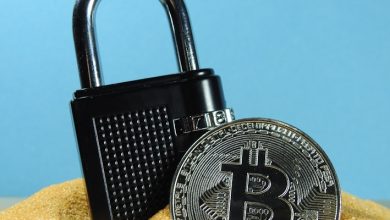The Impact of SIM Swapping on Crypto Security and How to Prevent It

- Understanding SIM swapping and its threat to crypto security
- How hackers are exploiting SIM swapping to steal cryptocurrency
- The consequences of falling victim to a SIM swapping attack
- Best practices for protecting your crypto assets from SIM swapping
- Tips for recognizing and preventing SIM swapping attempts
- The future of crypto security in the face of SIM swapping threats
Understanding SIM swapping and its threat to crypto security
SIM swapping is a prevalent threat to crypto security that can result in unauthorized access to a user’s cryptocurrency accounts. This attack involves a malicious actor convincing a user’s mobile carrier to transfer their phone number to a new SIM card under the attacker’s control. Once the attacker gains control of the phone number, they can reset passwords, bypass two-factor authentication, and gain access to sensitive information and funds.
This type of attack is particularly dangerous for cryptocurrency holders, as many platforms rely on SMS-based two-factor authentication for security. If a hacker successfully executes a SIM swap, they can easily take over the victim’s accounts and steal their digital assets. To prevent falling victim to SIM swapping, crypto users should take proactive measures to secure their accounts and phone numbers.
One of the best ways to protect against SIM swapping is to use alternative forms of two-factor authentication, such as authenticator apps or hardware security keys. These methods are not reliant on a phone number and are therefore not vulnerable to SIM swapping attacks. Additionally, crypto users should contact their mobile carriers to set up extra security measures, such as requiring a PIN or passphrase before making any changes to the account.
By understanding the threat of SIM swapping and taking steps to mitigate the risk, crypto users can better protect their digital assets from malicious actors. It is essential to stay vigilant and proactive in safeguarding cryptocurrency accounts to prevent falling victim to these types of attacks.
How hackers are exploiting SIM swapping to steal cryptocurrency
Hackers have been taking advantage of a technique called SIM swapping to steal cryptocurrency from unsuspecting victims. This method involves tricking a mobile carrier into transferring the victim’s phone number to a SIM card controlled by the hacker. Once the hacker gains control of the victim’s phone number, they can reset passwords and access sensitive accounts, including cryptocurrency wallets.
By gaining access to the victim’s cryptocurrency accounts, hackers can transfer funds to their own wallets, leaving the victim with significant financial losses. This type of attack has become increasingly common as more people invest in cryptocurrency and store their funds in online wallets. It is essential for cryptocurrency holders to be aware of the risks associated with SIM swapping and take steps to protect their accounts.
To prevent falling victim to SIM swapping attacks, cryptocurrency holders should consider using a hardware wallet to store their funds securely offline. Additionally, they should enable two-factor authentication on all accounts and avoid using SMS-based authentication methods. It is crucial to be vigilant and monitor accounts for any suspicious activity that may indicate a SIM swapping attack in progress. By taking these precautions, cryptocurrency holders can reduce the risk of falling victim to hackers exploiting this method to steal their funds.
The consequences of falling victim to a SIM swapping attack
Victims of a SIM swapping attack can face severe consequences that go beyond just financial loss. The impact of falling prey to this type of cybercrime can be far-reaching and devastating. Here are some of the potential ramifications of becoming a victim of a SIM swapping attack:
- Financial Loss: One of the most immediate consequences of a SIM swapping attack is financial loss. Hackers can gain access to your cryptocurrency accounts and drain them of funds, leaving you with little to no recourse to recover your money.
- Identity Theft: In addition to stealing your money, cybercriminals can also use the information obtained through a SIM swap to commit identity theft. This can result in your personal information being used for fraudulent activities.
- Reputation Damage: Being a victim of a SIM swapping attack can also damage your reputation, both personally and professionally. The breach of security can erode trust in your ability to protect sensitive information.
- Emotional Distress: Dealing with the aftermath of a SIM swapping attack can be emotionally taxing. The sense of violation and loss of control can lead to anxiety, stress, and other negative emotional consequences.
- Legal Troubles: Depending on the extent of the damage caused by the SIM swapping attack, victims may find themselves facing legal troubles. Recovering stolen funds and proving identity theft can be complex and time-consuming processes.
It is crucial to take steps to prevent SIM swapping attacks to avoid these severe consequences. By implementing security measures such as using strong, unique passwords, enabling two-factor authentication, and being cautious about sharing personal information online, you can reduce the risk of falling victim to this type of cybercrime.
Best practices for protecting your crypto assets from SIM swapping
When it comes to protecting your cryptocurrency assets from SIM swapping attacks, there are several best practices you can follow to mitigate the risk of falling victim to this type of fraud.
- Enable two-factor authentication (2FA) on all of your crypto exchange accounts and wallets to add an extra layer of security.
- Avoid using SMS-based 2FA methods, as they are more vulnerable to SIM swapping attacks. Instead, opt for authentication apps like Google Authenticator or hardware security keys.
- Regularly monitor your accounts for any suspicious activity, such as unauthorized login attempts or changes to your contact information.
- Keep your personal information private and avoid sharing sensitive details online or over the phone.
- Use a strong, unique password for each of your accounts and consider using a password manager to securely store and manage your login credentials.
By following these best practices and staying vigilant, you can help protect your crypto assets from SIM swapping attacks and keep your investments safe and secure.
Tips for recognizing and preventing SIM swapping attempts
Recognizing and preventing SIM swapping attempts is crucial to safeguard your crypto security. Here are some tips to help you stay protected:
- Regularly monitor your phone activity and look out for any unusual behavior such as sudden loss of signal or inability to make calls.
- Set up a PIN or password with your mobile carrier to prevent unauthorized SIM card changes.
- Avoid sharing personal information such as your phone number, account details, or other sensitive data online or through unsolicited calls.
- Enable two-factor authentication (2FA) on all your crypto accounts for an added layer of security.
- Keep your phone’s operating system and apps up to date to patch any security vulnerabilities that could be exploited by hackers.
By staying vigilant and taking proactive measures, you can minimize the risk of falling victim to SIM swapping attacks and protect your hard-earned crypto assets.
The future of crypto security in the face of SIM swapping threats
Ensuring the security of your cryptocurrency assets in the face of SIM swapping threats is crucial for any crypto investor. As these attacks become more prevalent, it is essential to stay ahead of the curve and implement robust security measures to protect your funds.
One way to enhance crypto security is by using hardware wallets, such as Ledger or Trezor, to store your digital assets offline. These wallets offer an extra layer of protection by keeping your private keys offline and away from potential hackers.
Additionally, enabling two-factor authentication (2FA) on all your crypto accounts can help prevent unauthorized access. By using an authentication app like Google Authenticator instead of SMS-based 2FA, you can reduce the risk of falling victim to SIM swapping attacks.
Regularly monitoring your accounts for any suspicious activity is also crucial in safeguarding your funds. By staying vigilant and being proactive in detecting any signs of unauthorized access, you can mitigate the impact of SIM swapping attacks on your crypto security.
Lastly, educating yourself on the latest security threats and best practices in the crypto space can help you stay informed and make informed decisions to protect your investments. By staying informed and implementing robust security measures, you can safeguard your cryptocurrency assets against SIM swapping threats and other security risks.



